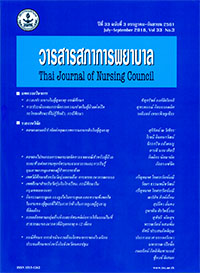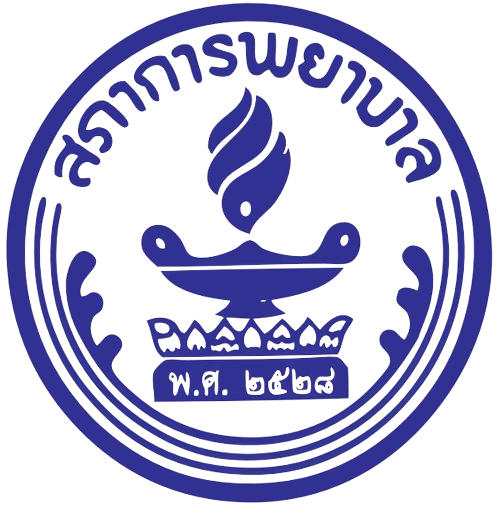Pain Assessment and Pain Management in Comatose Patients after Craniotomy: A Case Study
Keywords:
pain assessment, pain management, craniotomy, comatose patients, advanced practice nursesAbstract
The intensity of pain during the frst 48 hours after craniotomy may range from
moderate to severe. Relief of suffering and reduction of possibly ensuing complications
require effective pain assessment and management. This case study demonstrates roles
of advanced practice nurses in assessing and managing pain in comatose patients after
craniotomy. The patients’ pain was assessed through observation of the patients’ behaviours
and physiological changes and recorded on the Nociception Coma Scale (NCS). Pain
management was performed based on reliable, up-to-date, appropriate, and interdisciplinarily
recognised empirical evidence. The principle underlying this method was to achieve a
balance between the patients’ ability to respond to neurological assessment and the quantity
of analgesics that would not affect the patients’ response. In addition, non-pharmacological
pain management methods, for example, positioning, environmental arrangement, and
careful performance of pain-inducing medical procedure, were found to increase pain
management effcacy in this group of patients.
Downloads
References
2.Tsaousi GG, Logan SW, Bilotta F. Postoperative pain control following craniotomy: A systematic review of recent clinical literature. PAIN PRACT. 2017 Sep 1;17(7):968-81.
3. Chowdhury T, Garg R, Sheshadri V, Venkatraghavan L, Bergese SD, Cappellani RB, Schaller B. Perioperative Factors Contributing the Post-Craniotomy Pain: A Synthesis of Concepts. FRONT MED-PRC. 2017 Mar 1;4:23.
4. Tomasello F, Angileri FF, Conti A. Book Review: Youmans and Winn Neurological Surgery, 4-Volume Set.
5. Haldar R, Kaushal A, Gupta D, Srivastava S, Singh PK. Pain following craniotomy: reassessment of the availableoptions.BIOMEDRESINT.2015;2015.
6. Roulin MJ, Ramelet AS. Pain indicators in brain-injured critical care adults: An integrative review. AUST
CRIT CARE. 2012 May 1;25(2):110-8.
7.Barr J, Fraser GL, Puntillo K, Ely EW, Gélinas C, Dasta JF, Davidson JE, Devlin JW, Kress JP, Joffe AM, Coursin DB. Clinical practice guidelines for the management of pain, agitation, and delirium in adult patients in the intensive care unit. CRIT CARE MED. 2013 Jan 1;41(1):263-306.
8. Schnakers C, Chatelle C, Vanhaudenhuyse A, Majerus S, Ledoux D, Boly M, Bruno MA, Boveroux P, Demertzi A, Moonen G, Laureys S. The Nociception Coma Scale:a new tool to assess nociception in disorders of consciousness. Pain. 2010 Feb 1;148(2): 215-9.
9. Bourtong J, Sornsawat S, Kitbunyonglert S, Petpichetchian P. Validity and Sensitivity of the Nociception Coma Scale Used for Pain Assessment of Neurological Patients with Altered Level of Consciousness. Nursing Journal of the Ministry of Public Health. 2016; 26:109-119. (in Thai).
10.Dunn LK, Naik BI, Nemergut EC, Durieux ME. PostCraniotomy Pain Management: Beyond Opioids. CURR NEUROL NEUROSCI. 2016 Oct 1;16(10):93.
11.Yoongtong W. Chitraknatee A. Teantawee W. Sooksansamran N. Lauwharuengchaiyod J. Tathong T. Sukantho K. Mongkolchaipak T., editors. Manual of Rational Drug Use, Thai National Formulary 2015 of Anesthetics and Pain Medication. Bangkpk: Aksorn-graphic-and-design-publication; 2015. (in Thai).
12.Pattuwage L, Olver J, Martin C, Lai F, Piccenna L, Gruen R, Bragge P. Management of spasticity in moderate and severe traumatic brain injury: evaluation of clinical practice guidelines. J HEAD TRAUMA REHAB. 2017 Mar 1;32(2):E1-2.
13. Hirschi R, Rommel C, Hawryluk GW. Should we have a guard against therapeutic nihilism for patients with severe traumatic brain injury?. NEURAL REGEN RES. 2017 Nov;12(11):1801.
14.Qiu Q, Choi SW, Wong SS, Irwin MG, Cheung CW. Effects of intra-operative maintenance of general anaesthesia with propofol on postoperative pain outcomes–a systematic review and meta-analysis. ANAESTHESIA. 2016 Oct 1;71(10):1222-33.
15. Sadoughi A, Rybinnik I, Cohen R. Measurement and management of increased intracranial pressure. The Open Critical Care Medicine Journal. 2013 Dec 27;6(1).35
16.Chaemlai K. Kitrungrote L, Petpichetchian P. Development of Clinical Nursing Practice Guidelines for Procedural Pain Management in Surgical Critical Patients, Songklanagarind Hospital. Proceeding of the 4th Hat-Yai Academic Conferenc 2013. 2013, 710: 31-39. (in Thai)
17.Thongchai C. Best practice: Evidence based practice information sheets for health professionals tracheal suctioning of adults with an artifcial airway. The Joanna Briggs Institute 2000; 4: 1-6. (in Thai)








